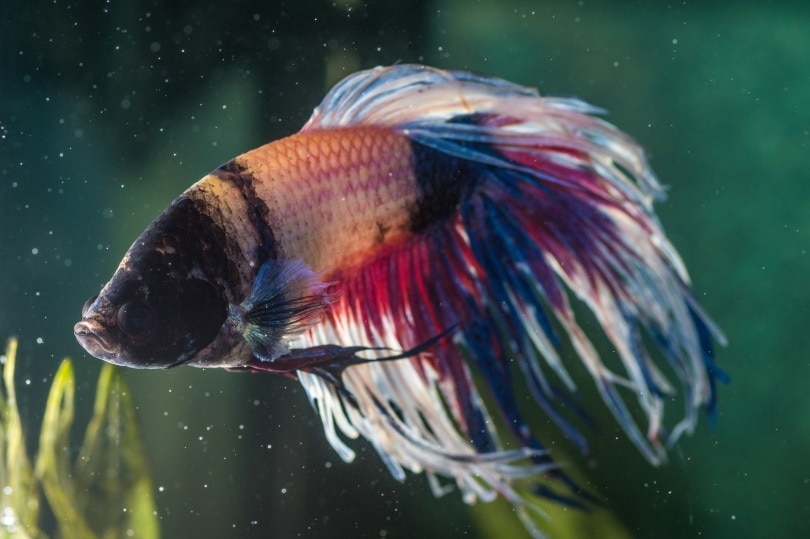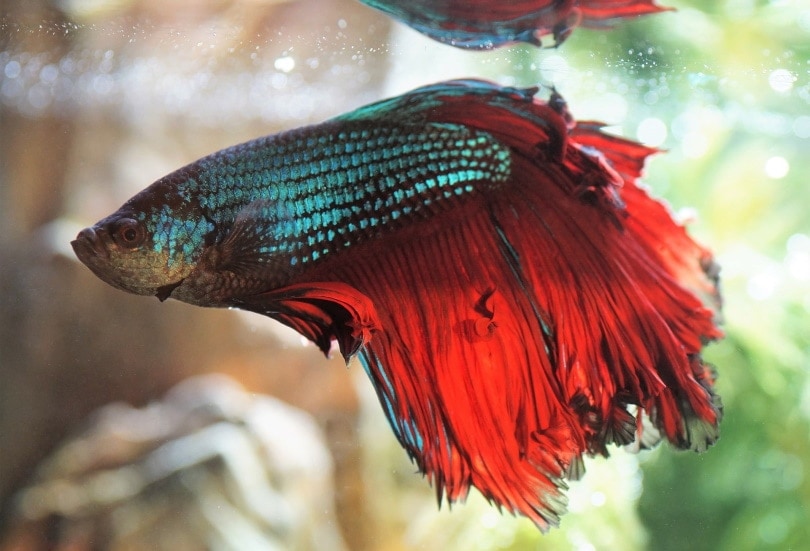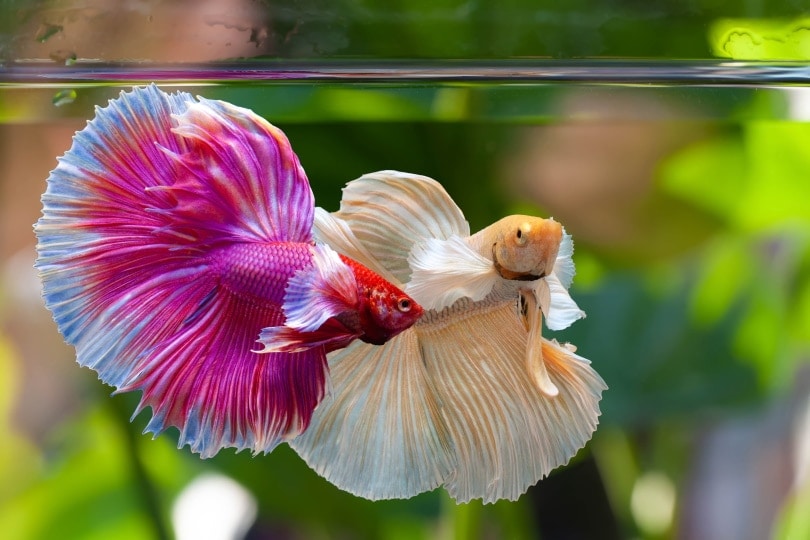Betta Fish Bubble Nest Making: Facts & FAQs

Updated on
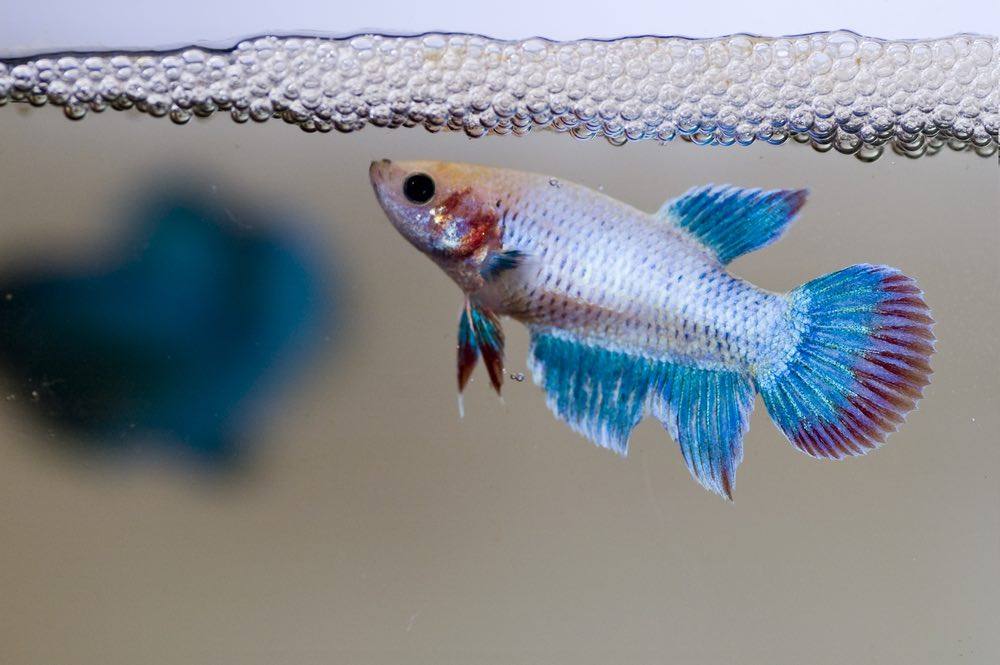
If you have a betta fish in your home aquarium, you may have noticed a big betta bubble nest in the tank. These things look quite weird, like a pack of bubbles floating on the surface of the water.
Don’t worry though, because it’s perfectly normal for these fighting fish to do this. The reason why betta fish will build a bubble nest in the tank is in order to protect their babies.
These betta fish nests are how both the males and the females prepare to breed. Bettas do this in the wild and they do it in fish tanks too. If you’re wondering ‘what does a betta bubble nest look like?’ keep reading to find out more!
Why Is My Betta Fish Making A Bubble Nest?
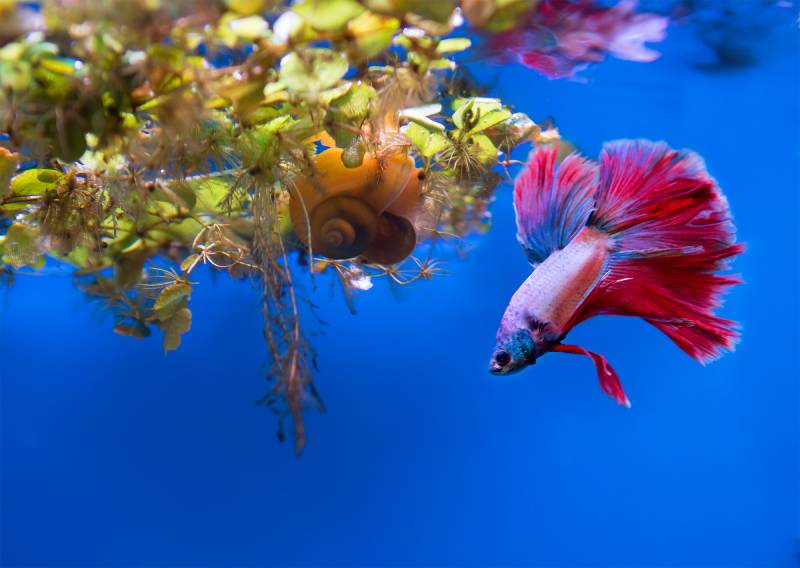
There is one main reason why your fish is building a bubble nest, and it all has to do with breeding. Now, what is interesting to note is that it is not the betta fish female which builds these foam nests, but the male betta which does so.
In the wild, male bettas will build these foam nests, often under floating debris or floating plants, and it’s all about keeping the eggs of the betta female fish safe and sound.
What is also cool is how this process works. The male betta will actually build nests regardless of whether or not a female is present. They will use their own saliva bubbles to construct a nest in the tank, and it will then wait for the female to come along to lay her eggs.
Once the eggs are laid by the female, the male will quickly scoop them up in its mouth and place them within the protective enclosure that is the betta fish bubble nest. It is thought that bettas use these bubbles, for one, to help protect their eggs and the baby bettas from predators.
It is thought that the eggs within the betta’s bubble nest become much harder to see. In other words, these nests play a large role in keeping predators at bay in nature. It’s a way to keep intruders from eating the betta fish’s young.
Moreover, in the wild, bettas usually live in dark, swampy, and murky waters, such as in rice paddies. The eggs, whether in the tank or not, need to be kept moist and surrounded by plenty of oxygen, something that can be hard to come by in muddy water.
Well, these bubbles help to keep the eggs moist and well oxygenated, which they need in order to hatch. Note that besides laying the eggs, the female will have nothing else to do with the process.
How Often Do Bettas Build Bubble Nests?
Once again, keep in mind that the bettas bubble nest is only built by the male betta fish, not by the female betta.
So, if you ever see your fish making bubbles in your tank, and you thought that it was a female, well, it’s actually a male. It is pretty cool because this is purely instinctual on behalf of the male. A male betta fish will build a bubble nest using its own saliva bubbles in the tank whether a female is present or not.
They simply have a natural urge to make these bubbles, and how often they do so can depend on a variety of factors such as water parameters, the environment, water changes, their health and age, and more.
When in the tank, some males may make just a few bubbles on occasion, some might make full nests of bubbles every few months, and some might do so as much as every week.
Exactly how often individual bettas make bubble nests in the tank is not an exact science, but the stronger the urge, the more often they will do so. Now, if want your fish to build nests in the tank, there are some things that you can do to encourage it.
Encouraging Your Betta To Make Bubble Nests
Whether you want to breed your bettas for fun, you want them to mate, or you just want to see your male betta make some awesome bubble nests.
There are a few different ways to encourage the siamese fighting fish to do so, right inside of your tank.
- The first thing that you want to do in order to spur on bubble nest building is to turn the filter down. Now, you can either turn the current coming from the filter down in the original tank, or you could also make a separate breeding tank for your betta.
- Either way, when these fish mate and produce young, it’s generally during a time of year when their natural homes see little to no currents, just stagnant water. Therefore, to recreate this low flow stagnant water environment, turn the power level on the filter down so there is minimal or no water movement in the tank.
- The next thing that you can try doing in order to spur on bubble nest construction is to get yourself some floating plants and other floating debris, such as driftwood, and you want to place it on the surface of the water.
- Yes, the bubble nests are designed to protect the baby betta fish, both before and after hatching, but that layer of floating debris on top is just another layer of protection which these fish can place their bubbles within. It will help make the betta more confident and it will make the female betta more likely to lay her deposit within that nest.
- Something else to keep in mind here is that to encourage bubble nest building, the betta tank needs to be at a certain temperature. In the wild, these fish live in waters which are generally between 78 and 82 degrees Fahrenheit.
- During the colder months, the water temperature will stay on the lower end of that range, and then in the springtime, when betta fish breed, the temperature will go through a big change and usually go up to that 82 degree high. In the wild, this temperature increase is a sign that it is time to start mating.
- Therefore, if you want your male betta to blow bubbles and build a nest, try keeping the water temperature at 78 degrees for a couple of months, and then over the course of a week or two, raise it up to 82 degrees.
- The next way to help encourage your betta to make that bubble nest is to ensure that the water is as clean and clear as can be. Now, this does not really to physical debris, as these fish do live in murky waters. However, they can sense impurities, such as high levels of ammonia and nitrites, as well as other compounds that may be bad for the unhatched and hatched betta fish fry.
- Now, this can be a bit tricky, because you do want to turn the current on your filter down to create relatively stagnant water, but you do also need to keep the water as clean and as pure as can be. Therefore, you will want to slightly increase the rate and amount of water changes you perform in the aquarium. Getting a very high quality and multi-stage filter will definitely help with this as well.
- What is also worth noting is that the male betta fish, although he will make bubble nests every now and again regardless of the presence of a female, he will still be much more encouraged to do so if there is a female betta fish present.
- The presence of a female will put his natural reproduction urge into overdrive, and therefore this will urge him to start blowing bubbles and make a good nest.
FAQs
Does a bubble nest mean my betta is happy?
Although bubble nest building is by far not the only indication of happiness and good health, it is certainly a good sign that your betta splendens is happy.
If your fish were stressed out, if it were not eating right, if it is not living in a clean and well-maintained aquarium with the right temperature, chances are that i would never make a bubble nest to begin with.
Betta fish build nests when they are happy, healthy, and ready to mate.
Should I remove Betta bubble nest?
One thing to consider here is that you do need to keep the aquarium clean. You should be cleaning the betta fish aquarium at least once per week, and you should be performing weekly water changes as well.
While the betta might not be super thrilled about the removal of its bubble nest, it will be far more detrimental to the health and the happiness of the fish if you neglect regular aquarium maintenance.
If you are worried about the betta being unhappy about the removal of its nest area, to clean the tank and to perform a water change, you can always scoop the nest up in a styrofoam cup and put it back in the tank once your care and maintenance of the aquarium is complete.

Do betta eggs need a bubble nest?
In the wild, yes, betta eggs do need to have bubble nests. This is how they stay oxygenated, moist, and protected from potential predators and threats.
However, when it comes to the aquarium, although the fish will still build their nests, it is not 100% necessary.
If you have a dedicated aquarium, even a breeding aquarium, then the water conditions should already be perfect.
Your aquarium is free of predators, the water is clean, and it’s well oxygenated too, and therefore no real need for a nest.
Do sick Bettas make bubble nests?
Although you might think that illness would be a good reason for bettas to stop making their bubbly nests, more often than not, this does not play a deciding role.
Sick betta fish will often continue with their nest building practices regardless of health.
How Do I Clean Tank Without Ruining A Bubble Nest?
The best way to clean the aquarium without ruining your betta fish’s nest is to scoop up the nest in a styrofoam cup, or some other sort of large container, all the while being careful not to ruin the nest.
Once you have completed aquarium maintenance, you can then gently pour the nest back into its original location. Don’t fret if some of the bubbles pop when you move them around, as this will happen.
Conclusion
The bottom line is that if you see your betta building these foamy nests, it is a sign that your fish is in good health, that it is happy, and ready to mate.
If you do want to have a mating pair, it might be a good idea to make a dedicated mating area or aquarium. Other than that, the rest is all up to you, your betta fish, and nature itself.
Featured Image credit: mnoor, Shutterstock




